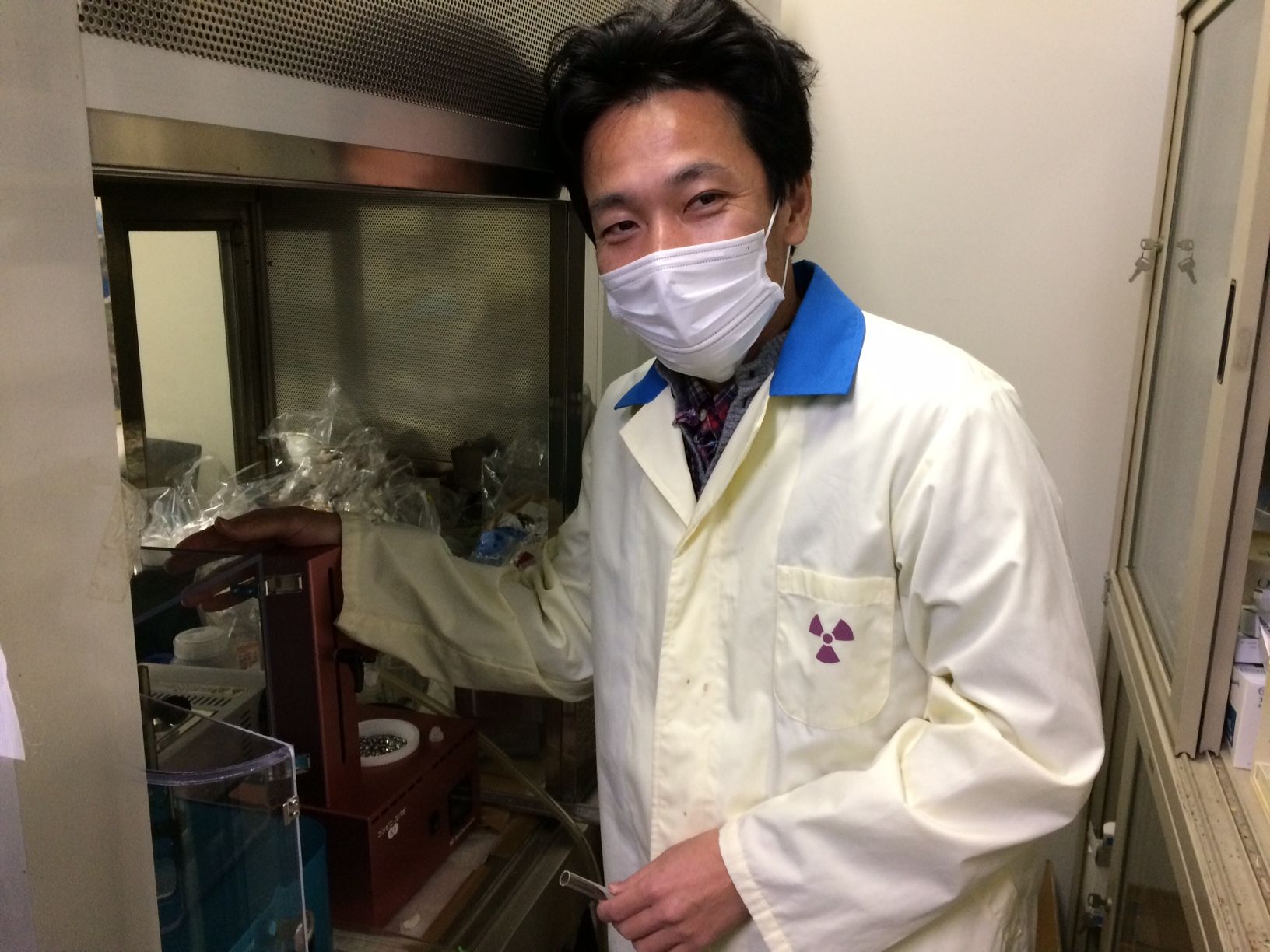Even the fraction container can be used as is for concentration.

Dr. Hirofumi Hanaoka studies the development of RI (Radioisotope) labelling agents in bioimaging. We interviewed him to learn about how the Smart Evaporator is being used in his research.
Interviewee:
Hirofumi Hanaoka, Ph.D., Associate Professor, Department of Bioimaging Information Analysis, Gunma University
BioChromato
In recent years, bioimaging has been attracting quite a lot of attention in pharmaceutical product development for in vivo verification methods for candidate compounds – for example, to verify the effectiveness of pharmaceuticals or cellular and molecular kinetics. In the field of bioimaging, how many laboratories of this type exist in universities in Japan?
Dr. Hanaoka
There are approximately 20-30 laboratories nationwide in this field. My target area of research is in cancer cells.
BioChromato
I understand that you are doing basic research in imaging, using PET (Positron Emission Tomography). Our Smart Evaporator is used for the purpose of concentrating the PET chemicals after label synthesis – could you please explain the basic outline of your process?
Dr. Hanaoka
In my study, I am aiming to develop RI-labeled drugs for diagnosis, as well as for treatment. Basically, chemical compounds are RI-labeled using nuclides that I’ve obtained. After preparing the sample using HPLC, samples are concentrated in order to remove the organic solvent. After this, evaluation tests are carried out by administering the product to mice and so on.
BioChromato
I understand that for preparation, you carry out gradient elution using acetonitrile and water with trifluoroacetic acid (TFA). Could you please tell us about the type of containers and volumes?
Dr. Hanaoka
We add 3 mL of the prepared sample into 5 mL disposable glass tubes, loading it into the Smart Evaporator as is, and concentrate it down to 100 ~ 200μl. Before, I used rotary evaporators or nitrogen blowdown methods, but because the concentration volume was very small, so I decided to introduce the Smart Evaporator when these devices needed to be replaced.
BioChromato
After introducing the Smart Evaporator, have you noticed any increased efficiency or any other benefits?
Dr. Hanaoka
Until then we always had to transfer samples from glass tubes to other containers in order to concentrate, but after introducing the Smart Evaporator, this has become unnecessary and the risk of losing the sample has been gone down. Because concentration can be done in any container, we can evaporate the sample in the containers that we use down to 200mµ (not completely until it’s dry) then directly inject into mice with a syringe. This process can now be finished in about 2 hours, and we can plan to complete concentration by the end of our lunch break, which has made things much easier.
BioChromato
The Smart Evaporator does seem to make the process more efficient. You currently own two Smart Evaporator units – is this because you have many samples to process?
Dr. Hanaoka
It is not that we had to process a lot of samples, but we need to concentrate samples concurrently with other samples – RI has a very short half-life, which can be as short as 2 hours, and as a result, researchers need to prepare the sample and have it ready for concentration at a certain time. That is why we added another device.
BioChromato
I see, handling RI is truly a fight against time. I understand how the Smart Evaporator does a good job at meeting those needs. On the contrary, in your experience using the device are there any improvements that you would like to see?
Dr. Hanaoka
Well, for our purposes, we do not wish to completely evaporate the solvent to dryness but complete the concentration with a certain amount of solvent left – for such purposes we need to pick up the container to check because the concentrated sample is hidden under the aluminum beads. If we could check the quantity of the fluid without picking it up, we’d be even happier.
BioChromato
Thank you for your valuable feedback – in the past, we have considered ways to check the remaining amount of fluid, but found that the costs were too high. It would be an idea though, for example, to have containers with a scale that enables exactly 100µl to be left.
Dr. Hanaoka
If you find a way to do this, please let me know. Also, if you could recommend any containers that would work with this, that would be helpful too.
BioChromato
Certainly- We will keep working to provide users like you with valuable information, through our research and feedback from valued users as yourself. Thank you for your time- we greatly appreciate your continued support.
Summary
Dr. Hanaoka who gave his time for this interview does basic research in bioimaging using PET. In the RI-label development process, the solvent needs to be removed after HPLC preparation, however, preparation time is limited by RI’s short half-life. By introducing the Smart Evaporator to the laboratory, the fraction container can be used as is for concentration, eliminating the need to transfer from one container to another. This eliminates the problem of sample loss and reduces working time. Further, they have become able to concentrate the sample to the appropriate quantity for direct injection into mice, improving their efficiency even further, enabling them to better manage their time and be free to take their lunch break at a reasonable time – we are delighted to hear that our products are making them happy.
(Interviewer: Kikuchi, Otake)
■Interested in what Smart Evaporator is? You can learn from here!
